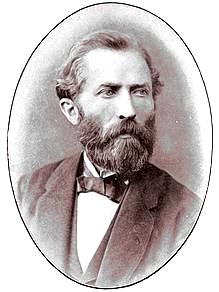Anton de Bary facts for kids
Heinrich Anton de Bary (born January 26, 1831 – died January 19, 1888) was a German scientist. He was a surgeon, a botanist (someone who studies plants), and a microbiologist (someone who studies tiny living things). He was also a mycologist, which means he studied fungi like mushrooms and molds.
De Bary is known as a founder of plant pathology. This field studies plant diseases. He also started modern mycology, the science of fungi. His careful studies of fungi and his work on algae and higher plants were very important for biology.
Contents
Anton de Bary: A Pioneer in Plant Science
His Work with Lichens
Anton de Bary spent time studying lichens. Lichens are a special team-up between a fungus and an alga. He carefully watched how they grew and made copies of themselves. He also learned how lichens could survive tough times, like dry weather or cold winters.
In 1879, de Bary created the word 'symbiosis'. He used it to describe how different living things live together. He said it was "the living together of unlike organisms." He also studied the shapes and lives of moulds, yeasts, and other fungi. Because of his work, mycology became its own important science.
Discovering Slime Moulds
De Bary was one of the first scientists to research slime moulds. These are strange organisms that act a bit like fungi and a bit like animals. He wrote an important paper about them in 1859. Later, he even published a whole book on the subject. His studies helped us understand these unique living things better.
See also
 In Spanish: Anton de Bary para niños
In Spanish: Anton de Bary para niños


